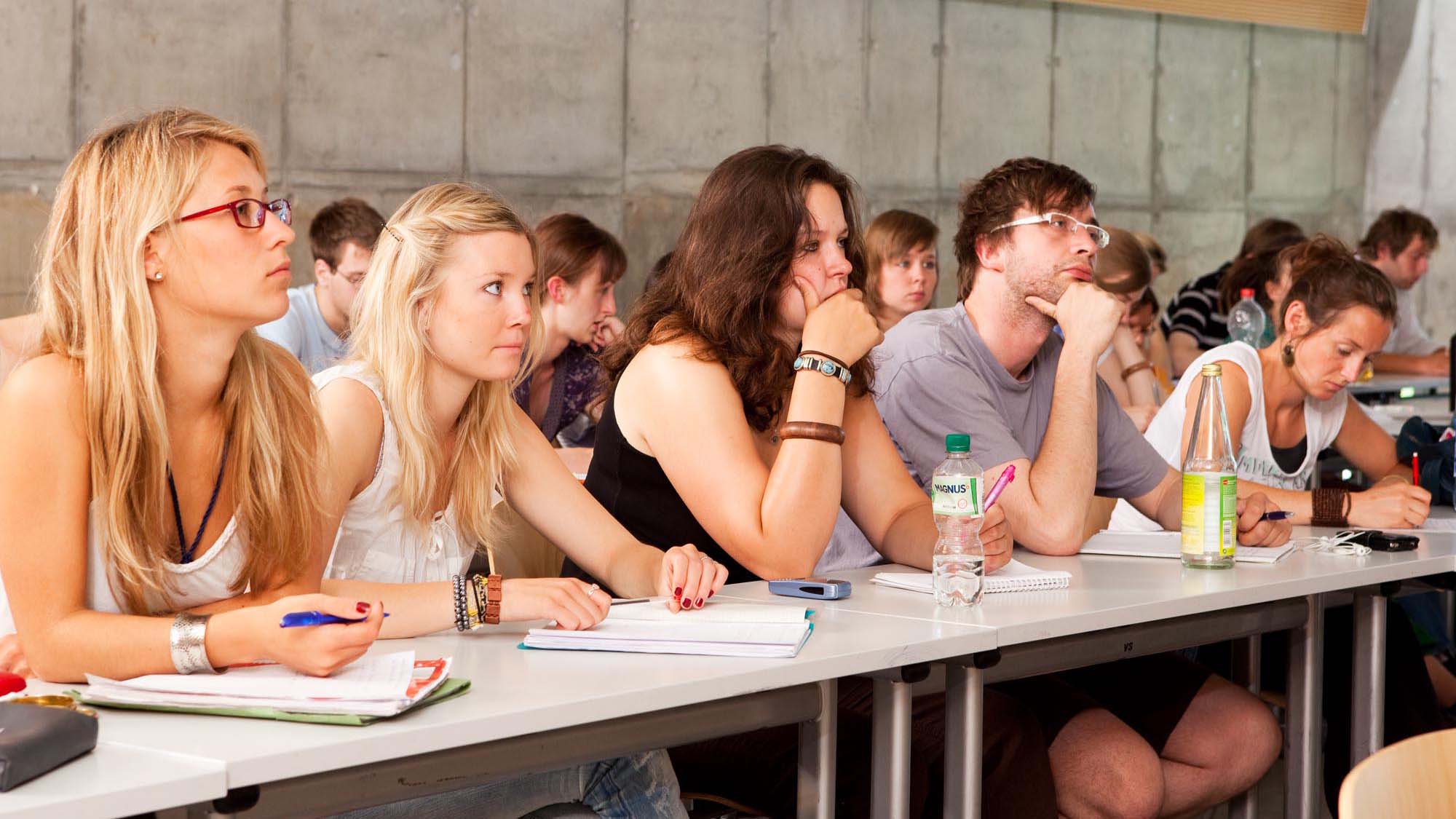
© Universität Bremen
Committed to Teaching and Learning
Facts and Figures about 50 Years of the University of Bremen. Part 1: Teaching and Learning.
The university of Bremen is turning 50 years old in 2021. Much has changed since 1971. To this day, however, hat retained what was distinguished it for five decades - it is open to everyone. We take a look back at the University of Bremen’s impressive evolution. Using facts and figures, we illustrate how a courageous reform project became one of Europe’s top research universities with more than 19,000 students in just five decades.
The early 1970s were a time of renewal in Germany. The West German student movement of the 1960s, in particular, had initiated important social reforms that led to concrete changes in politics and institutions. During this transformative period, the University of Bremen was founded as a reform university.
The “Bremen Model,” as it was called, envisaged systematically aligning the university with the pressing issues facing society, among others. It was not intended to be an ivory tower; it was intended to transcend existing boundaries. With respect to teaching and learning, this meant a close link between research and teaching that was centered around the degree programs, interdisciplinary collaboration, and space for discourse and critical thinking. These are guidelines that still apply today.
Please note:
Because certain 2020 figures have been skewed by the coronavirus pandemic, the most recent data in some of the diagrams is from 2019.
YOUKNOWWHY since 1971
Approximately 5,000 new students begin a degree program at the university each year. In this context, Bremen attracts the most freshmen from other German states. Why do so many young people want to study here? Many of the reasons have remained unchanged for 50 years.
The university is an inspiring place of education and research. It’s young, dynamic, diverse, and open. Students can perform early independent research and try things out. The campus university offers short distances and flat hierarchies.
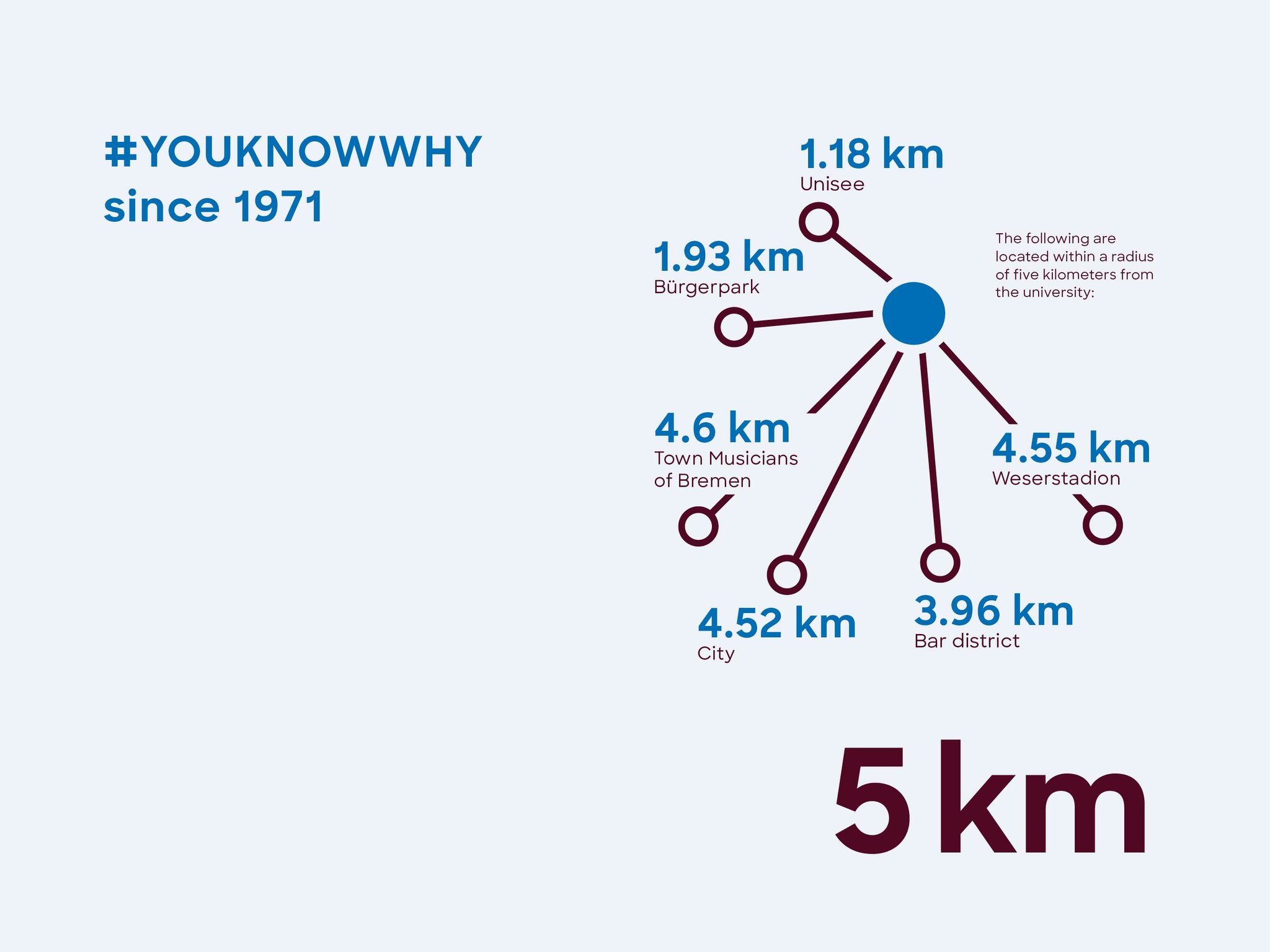
Website YOUKNOWWHY
Student Numbers
When the University of Bremen opened on October 19, 1971, it had just 459 students. The founders planned to increase the number of students from the very beginning – the University of Bremen was meant to become a comprehensive university for all of northwest Germany. Today, more than 19,000 students attend the university. The percentage of those who complete their studies within the standard period of study far exceeds the national average.
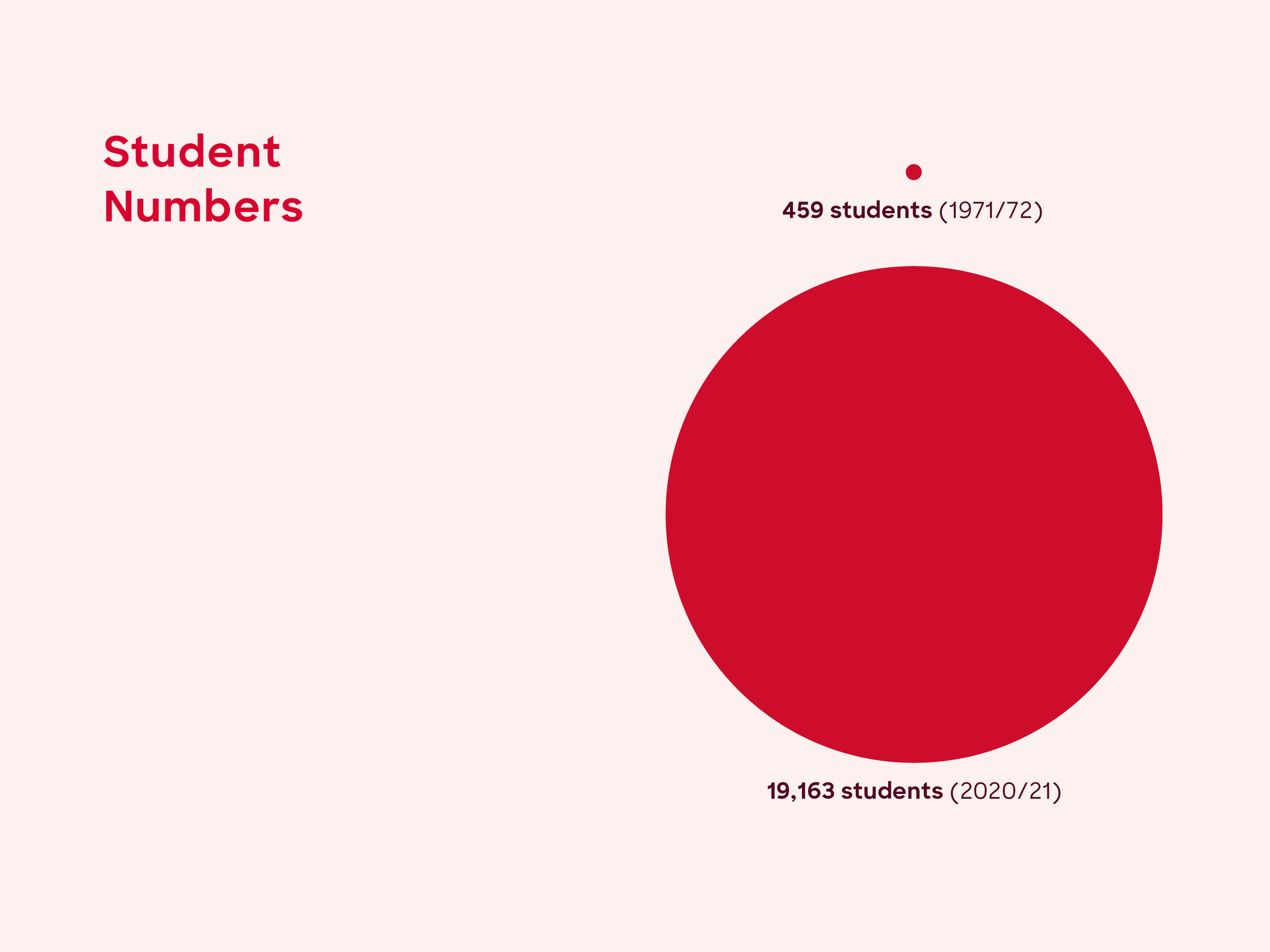
Gender Ratio
During the second wave of the women’s movement, the number of female students in West Germany increased from the 1960s onward. By the 1990s, the percentage of women studying at universities had caught up to that of their male counterparts. At the University of Bremen, women also accounted for 50 percent of all students for the first time 27 years after its founding. The goal today is to attract students to subjects in which they are underrepresented, such as female students in the STEM subjects.*
(* STEM stands for science, technology, engineering, and mathematic.)
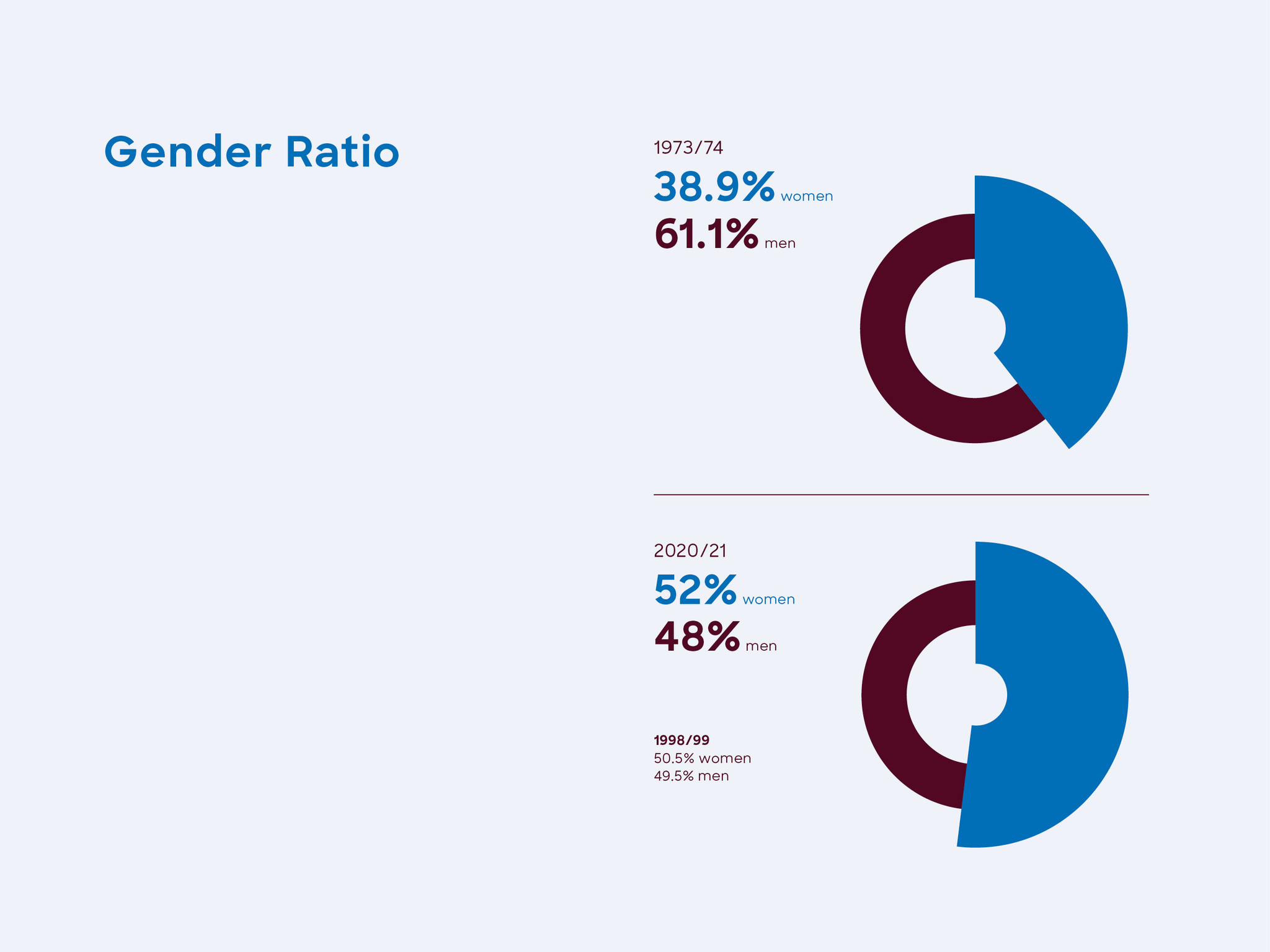
Number of Degree Courses
The University of Bremen’s main role was initially to educate teachers. At the end of the 1970s and beginning of the 1980s, a period of consolidation began: new courses in the natural sciences and engineering sciences were introduced, such as the diploma courses in computer science and electrical engineering in the winter semester of 1978/1979, for example. The introduction of Production Engineering and Marine Geosciences was also already planned. Today, both disciplines are among the university’s flagships.
Nationwide first: Winter semester 1978/79: Courses in German as a foreign language introduced Winter semester 2005/06: Specifically subjectrelated Educational Sciences introduced
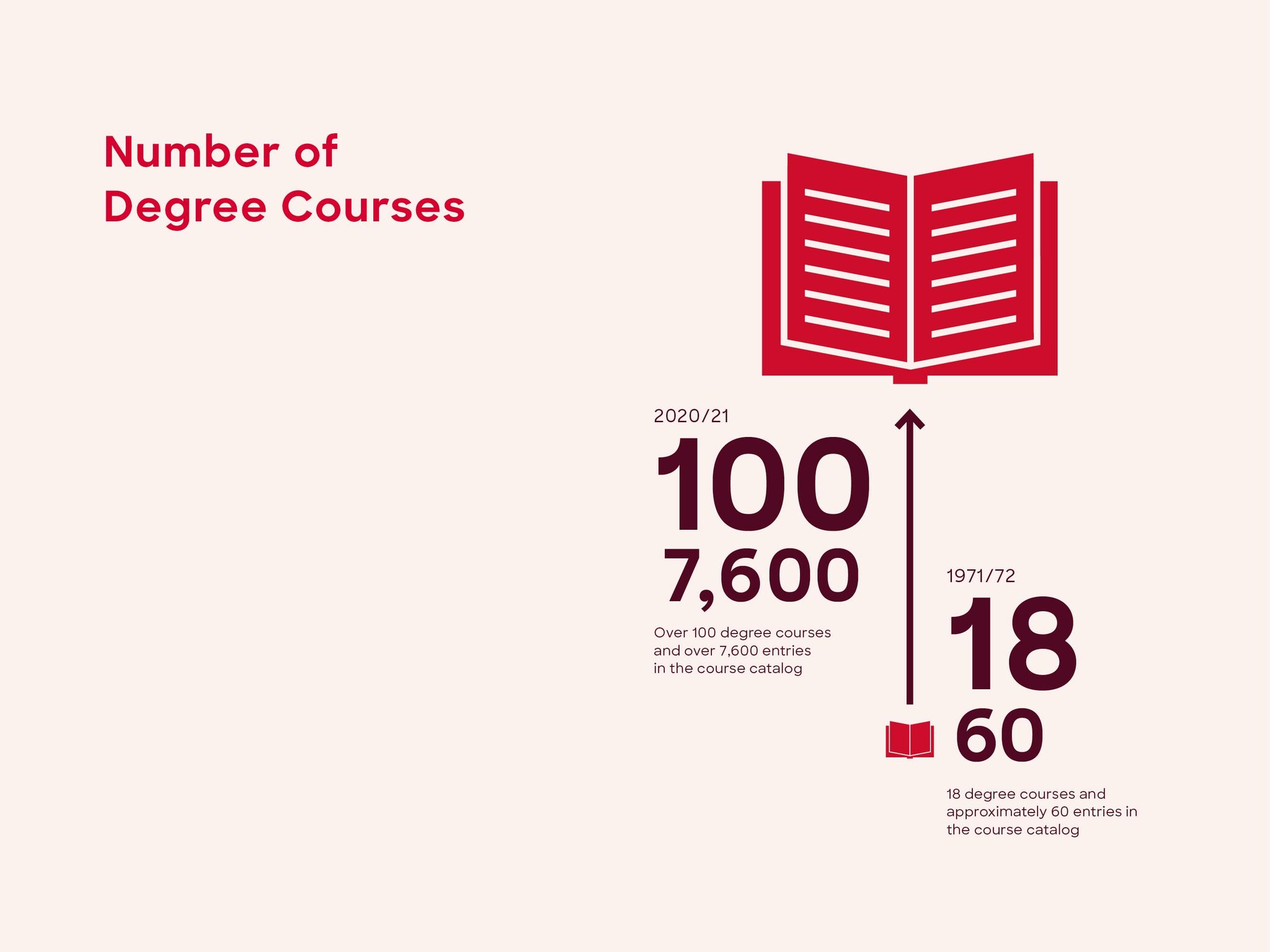
Researched Based Learning
Formerly project-based studies, today research-based learning: a close link between research and teaching has always been cultivated at the university – educators and students critically examine environmental, societal, cultural, and scientific trends. Providing a high-quality education is important to the university. This is also reflected in the Berninghausen Prize, which has been presented annually since 1991 for exemplary teaching and innovation. It is one of the oldest teaching awards in Germany – sponsored by the Berninghausen family and awarded by the University of Bremen and the “unifreunde Bremen” association.
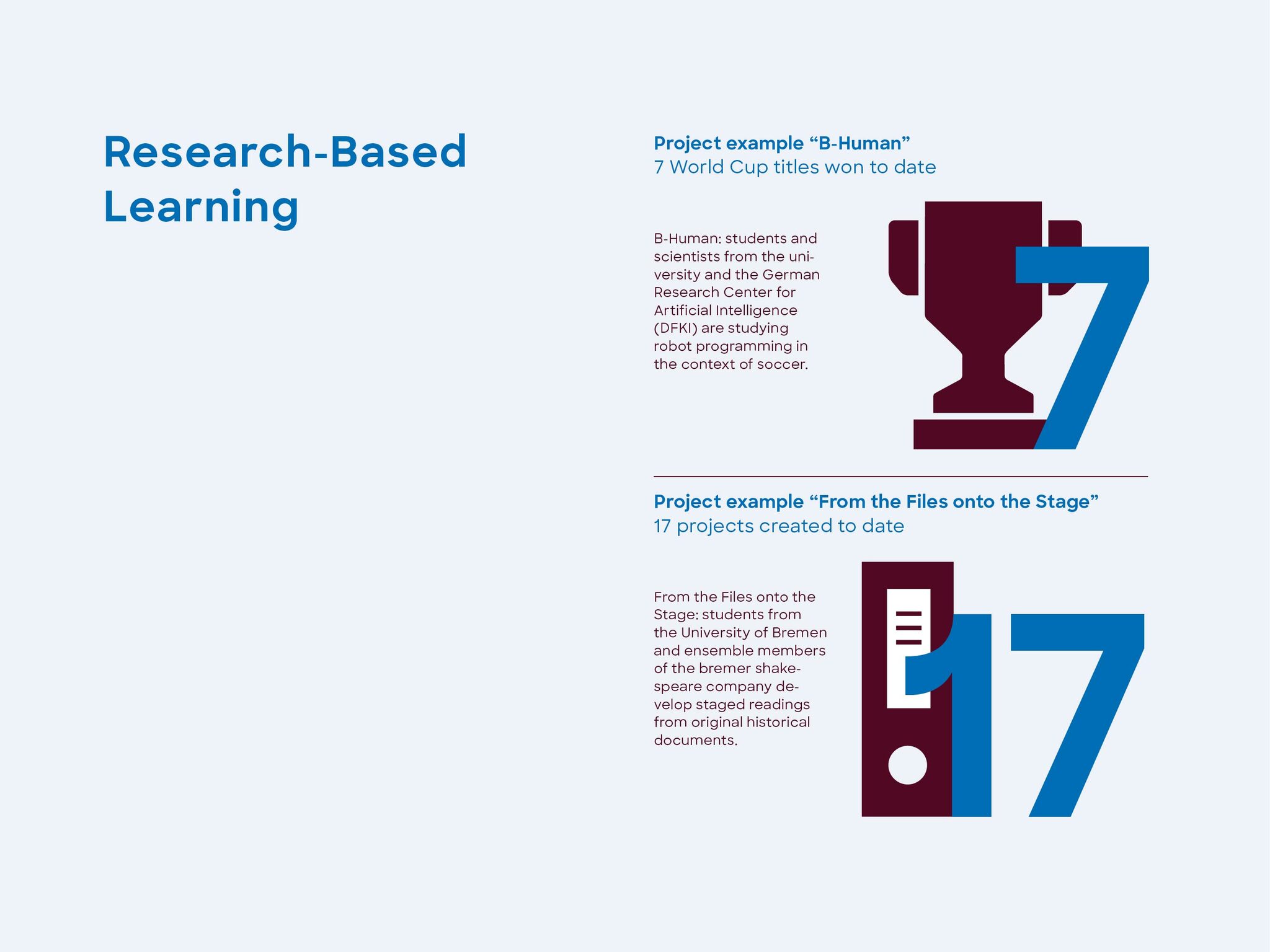
Website B Human
Website Sprechende Akten
More Information
More facts and figures wanted? Have a look in the Yearbook
Check out our website 50 Years of the University of Bremen